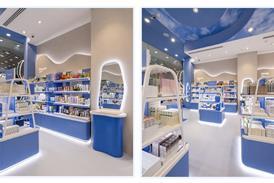PROMOTIONAL RESEARCH
User-generated content and interactive video can help businesses win the hearts and minds of online shoppers, new research from Retail Week has revealed.
Our Video Oscars report found that shoppable, interactive video and user-generated (UG) content are two online marketing trends set to snowball over the coming year, helping retailers drive customer acquisition.
“53% of UK consumers like to watch videos when researching a potential purchase”
The trends, highlighted below, are supported by the findings that 53% of UK consumers like to watch videos when researching a potential purchase, while around 47% of millennials (aged 18 to 34) have been directly influenced to make a purchase after watching a video.
Shoppable video
With shoppable videos, converting browsers to buyers has never been quicker. Retailers can insert simple calls to action, add-to-cart functionality and more, making the user journey from customer awareness to conversion seamless.
Content creation agency Studio Black Tomato reports that the impact of shoppable videos on purchase intent is nine times higher than non-shoppable videos.
“The impact of shoppable videos on purchase intent is nine times higher than non-shoppable videos”
Several retailers have already made successful forays into shoppable video, including Yoox Net-a-Porter, which launched a service in May this year that allows customers to purchase from its fashion platform without leaving Instagram.
In February this year, US shopping television network QVC launched an app that includes frequently updated shoppable videos.
UG content
Hot on the heels of the burgeoning influencer marketing trend (predicted to become a $10bn industry by 2020 according to digital marketing community ClickZ), UG content is set to take a bigger role over the coming year.
“UG content scratches that authenticity itch, giving prospective shoppers genuine and unbiased information about a brand’s products”
Unlike influencer videos, which are paid for and sponsored by brands, UG content is voluntarily produced by customers and scratches that authenticity itch, giving prospective shoppers genuine and unbiased information about a brand’s products.
Retailers can capitalise on this trend by sharing UG content related to their brand.
Tech companies such as Olapic help retailers identify and verify UG content. Olapic browses social media feeds for content related to the retailer, verifies the content, approves it for use and then shares it with the retailer to use in their online marketing.




















































No comments yet